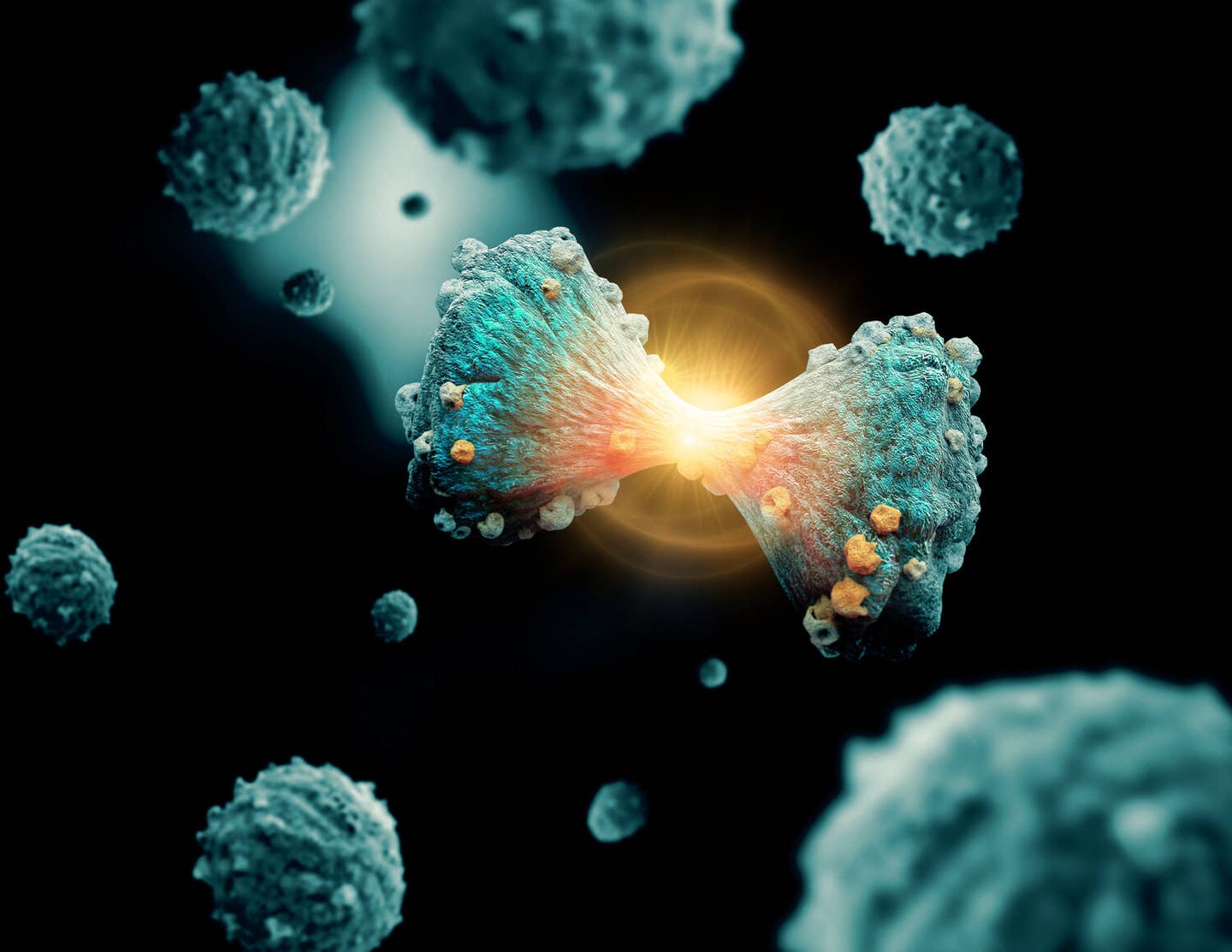Liquid Metal Nanoparticles: The Future of Cancer Treatment
Liquid metals (LM) are emerging as revolutionary materials, promising a groundbreaking approach to the fight against cancer.

[Aug 7, 2023: Staff Writer, The Brighter Side of News]
Liquid metals (LM) are emerging as revolutionary materials, promising a groundbreaking approach to the fight against cancer. (CREDIT: Creative Commons)
Liquid metals (LM) are emerging as revolutionary materials, promising a groundbreaking approach to the fight against cancer. Pure gallium (Ga) and Ga-based alloys, in particular, have been observed to have unique physicochemical properties that make them ideal candidates for novel medical treatments. The latest groundbreaking application? Photothermal therapy against cancer.
The principle behind this is relatively straightforward: functional LM nanoparticles convert light energy into heat energy, obliterating malignant cancer cells. Remarkably, this method has already been observed to outpace traditional cancer treatments in specificity, repeatability, and the considerably fewer side effects it produces.
In a breakthrough study recently published in Advanced Functional Materials, Associate Professor Eijiro Miyako and his diligent team from the Japan Advanced Institute of Science and Technology (JAIST) introduced the world to a synthesized multifunctional Ga-based nanoparticle designed for dual-action: combining the forces of cancer phototherapy and immunotherapy.
Unveiling the study, Dr. Miyako explained, “We believe that the convergence of nano-immuno engineering and LM technology could provide a promising modality to trigger ideal immune responses for advancing cancer immunotherapy. In this study, we report light-activatable multifunctional LM nanoparticles with immunostimulants to combine photothermal therapy with immunotherapy.”
Related Stories
The unique nanoparticle, named PEG-IMIQ-LM, is formulated from a eutectic gallium-indium (EGaIn) LM alloy coupled with an immunological modulator named imiquimod (IMIQ). Intriguingly, both are embedded inside a biocompatible surfactant, DSPE-PEG2000-NH2.
But how was this creation achieved?
Initially, the researchers generated water-dispersible LM nanoparticles using a relatively uncomplicated one-step sonication process, leveraging DSPE-PEG2000-NH2 as the medium to introduce IMIQ. This innovative approach overcame a significant challenge since EGaIn LM is typically water-repellent.
A versatile liquid metal (LM) gallium-indium alloy has been used to develop a novel LM nanoparticle that harbors an immunomodulant and an immune checkpoint inhibitor, Anti-PD-L1. (CREDIT: Eijiro Miyako from JAIST)
Subsequent experiments disclosed the LM’s tendency to disintegrate, ensuring precise IMIQ delivery to the intended target. This versatility was further showcased when the nanoparticle's absorbance in the near-infrared (NIR) region at 808 nm demonstrated a linear increase, proving its optically activatable capabilities.
The team’s subsequent experiments demonstrated the robustness of the PEG-IMIQ-LM nanoparticle. When the nanoparticle's aqueous solution was subjected to NIR laser (808 nm) irradiation, they noted a significant rise in the solution's temperature, directly proportional to the nanoparticle concentration. This observation substantiates the nanoparticle's efficacy as a photothermal drug carrier, primed for immunotherapy.
But the discoveries didn't end there.
Structural characterization of functional LM nanoparticles. Schematic illustration of the preparation of PEG–IMIQ–LM nanoparticles. (CREDIT: Advanced Functional Materials)
LM nanoparticles showed an excellent safety profile, exhibiting no cytotoxicity in human fibroblast (MRC5) and mouse colon cancer (Colon26) cells. Additionally, with the introduction of a fluorescent dye called indocyanine green (ICG) into the particle, PEG–ICG–IMIQ–LM particle displayed potent fluorescence at various NIR wavelengths, successfully targeting and destroying Colon26 cells.
The team's innovation took a further leap with the development of a multifaceted LM immune nanostimulator for cancer theranostics. This involved integrating an anti-programmed death ligand-1 antibody (Anti-PD-L1), a top-tier immune checkpoint inhibitor, into the fluorescent LM nanoparticle. The outcome, labeled Anti-PD-L1‒PEG–ICG–IMIQ–LM, not only dispersed efficiently but also, post-irradiation, depicted a linear temperature increase on the tumor's surface, a direct indicator of the nanoparticle's antitumor efficacy.
Photothermal conversion and drug-releasing behaviors of the laser-induced LM nanocomplex. (CREDIT: Advanced Functional Materials)
Interestingly, by adding Anti-PD-L1, the nanoparticle could attach itself to PD-L1 found on cancer cells, setting them up for elimination by macrophages and dendritic cells. The most impressive result came from mice experiments: laser-induced Anti-PD-L1–PEG–IMIQ–LM particles showed profound cancer removal, faster healing, and remarkable recovery.
Dr. Miyako, while reflecting on the broader implications, optimistically stated, “We believe that these synergistic immunological effects and optical nanofunctions of LMs have wide therapeutic applications and might contribute to innovative cancer theranostic technologies. We are hopeful that this technology will be available for clinical trials in 10 years.”
The scientific world eagerly awaits the next phase of developments from Dr. Miyako's team, hopeful that their pioneering work will pave the way for innovative, effective cancer treatments.
Note: Materials provided above by The Brighter Side of News. Content may be edited for style and length.
Like these kind of feel good stories? Get the Brighter Side of News' newsletter.
Joseph Shavit
Head Science News Writer | Communicating Innovation & Discovery
Based in Los Angeles, Joseph Shavit is an accomplished science journalist, head science news writer and co-founder at The Brighter Side of News, where he translates cutting-edge discoveries into compelling stories for a broad audience. With a strong background spanning science, business, product management, media leadership, and entrepreneurship, Joseph brings a unique perspective to science communication. His expertise allows him to uncover the intersection of technological advancements and market potential, shedding light on how groundbreaking research evolves into transformative products and industries.



